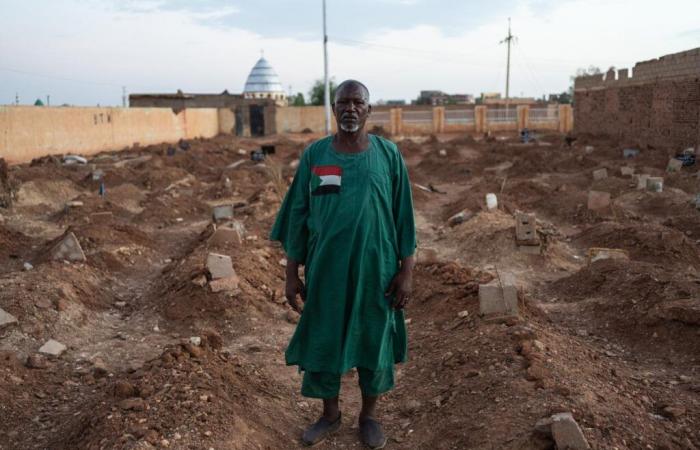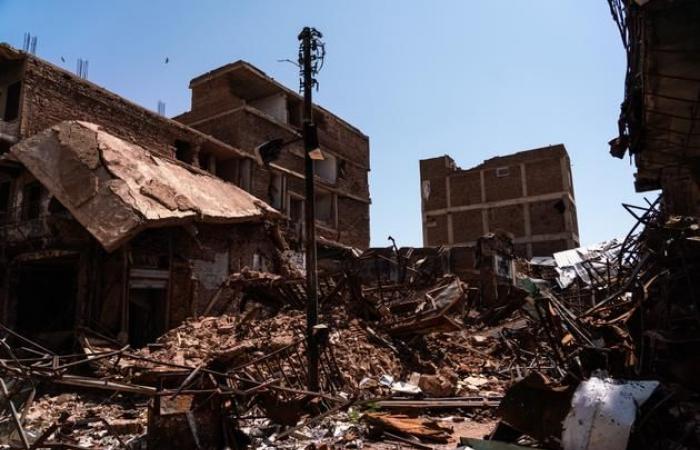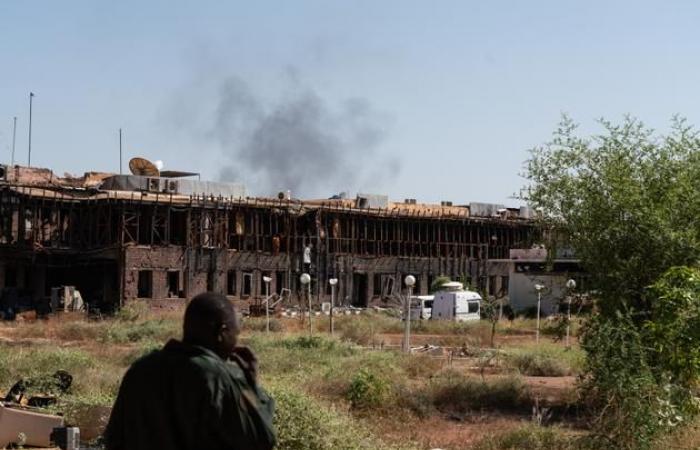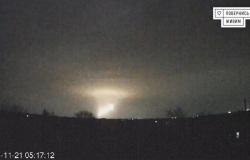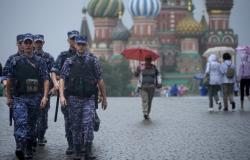The body arrives but the grave is not yet ready. The gravediggers dig like devils to complete their work. The procession is already approaching, slaloming between the graves which extend as far as the eye can see, spaced a few centimeters apart. The funerals do not take place within the confines of the Ahmed-Sharfi cemetery, but outside its walls. Inside this necropolis nestled in the heart of Omdurman, the city which borders Khartoum, there is no more space. Eighteen months of war have filled the cemeteries of Sudan’s capital and its suburbs. Burials are now carried out along the stone wall, on a vacant lot where young people from the neighborhood came to play football.
Around 3:30 p.m., Thursday, October 24, Mohammed Adam, a 65-year-old carpenter, was dismembered by a mortar shot. The shell fell in the courtyard of his house while he was resting on a bed. His daughter, Imane, was bringing him coffee when the courtyard was blown up. With dust in their eyes, the young woman and her neighbor, Osama, picked up the pieces. Two hours later, his mortal remains wrapped in a shroud made their way towards their final asylum, carried by a handful of men whose sandals sank into the still fresh earth of the nearby graves.
No funeral oration. Just the deadthe prayer, said by the site supervisor, Abdeen Dirma, a colossus with a hollow voice. “These days, we are burying more and more dead people because of artillery”he soberly notes.
Also read the column | “In Sudan, weapons cross borders more easily than humanitarian aid”
Read later
The month of October 2024 was one of the deadliest for Sudanese civilians since the start of the war in April 2023, between the Sudanese Armed Forces (FAS), led by General Abdel Fattah Abdelrahman Al-Bourhane, and the paramilitary militias of the Rapid Support Forces (RSF), led by General Mohammed Hamdan Daglo, alias “Hemetti”. In Khartoum, paramilitaries shell areas controlled by the regular army. Every day, munitions fall indiscriminately on homes, football fields and schools populated by people displaced by the fighting. Opposite, the FAS aviation increased its bombings on enemy positions, causing dozens of civilian deaths.

In four weeks, more than 700 of them were killed, according to government estimates. Mondeas battles intensified on multiple fronts across the country. If the United Nations continues to report a death toll of around 20,000, there are no reliable statistics in Sudan. The war may have caused more than 150,000 civilian casualties in bombings, massacres and counting deaths from hunger and disease.
You have 85.28% of this article left to read. The rest is reserved for subscribers.

